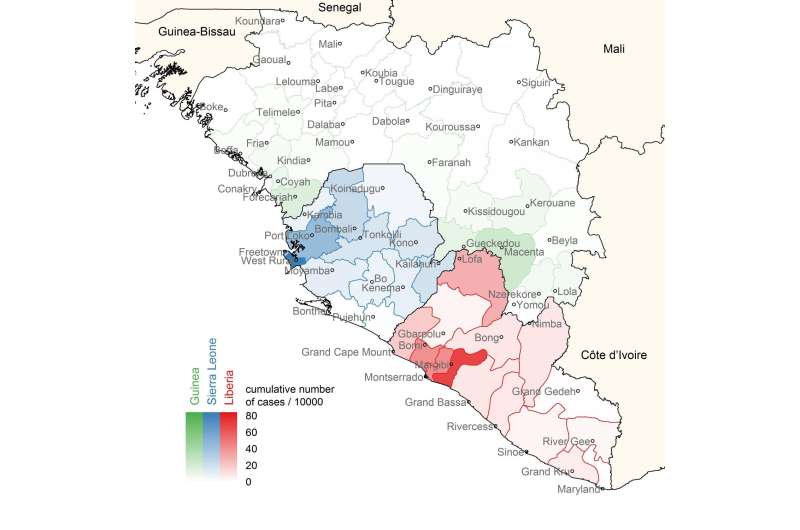Control of emerging Ebola infections could be aided by new monitoring method

New research on the 2014 Ebola epidemic tracks the rate at which infections move from one district to another and how often infections cross the borders between countries. This study, published in PLOS Computational Biology, could be used to analyze breakouts of new infectious diseases - even when little is known about the transmission characteristics of the new infection.
The 2014 Ebola epidemic hit some West African districts very hard, while leaving other districts untouched. Yet there is no evidence that the transmission of the Ebola virus differed between those districts, according to Drs Backer and Wallinga at the Dutch National Institute for Public Health (RIVM).
By comparing the notification records in all districts of three affected countries (Guinea, Sierra Leone and Liberia), the researchers could trace back how the virus spread through each district and how it traveled from one district to another. Their research shows that each infective infected on average two new cases in the beginning of the epidemic, and that most of the infected individuals (at least 90%) did not leave their district. Some districts were hit harder because infection was introduced earlier and because infections were introduced more often.
To extract this information from notification records the researchers developed novel algorithms, which represent an epidemic as a network of local outbreaks that are interconnected through travelers that transport infection from one district to another. The main advantages of this representation are that it avoids making strong assumptions on transmission characteristics, and that it requires few data beyond the number of inhabitants per district and the notification records. In the future, the researchers hope that their algorithms will help to effectively control any new emerging epidemic, even when we don't know much about the transmission characteristics of the new infection.
"Monitoring epidemics is crucial if we want to assess the required effectiveness of control measures" says Dr. Backer, the lead author on this paper. "Now we show that when we monitor a local epidemic together with the epidemic in neighboring districts, we can inform decisions on movement bans or even border closures. In this way, our algorithms can help to effectively control emerging infections."
More information: Backer JA, Wallinga J (2016) Spatiotemporal Analysis of the 2014 Ebola Epidemic in West Africa. PLoS Comput Biol 12(11): e1005210. DOI: 10.1371/journal.pcbi.1005210














